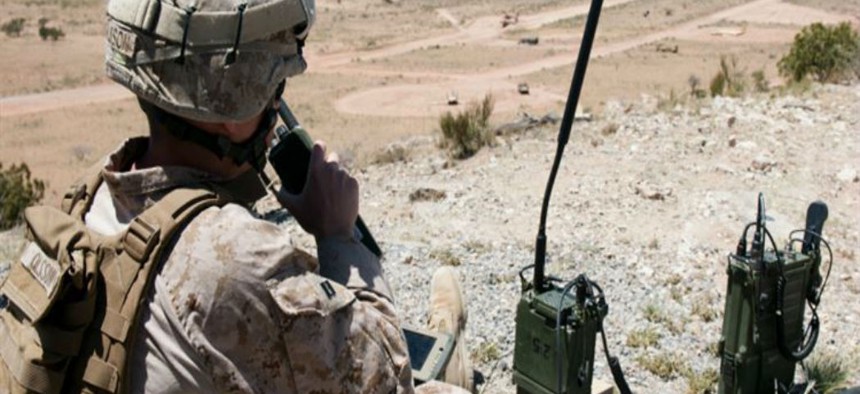DARPA proposes new urban combat virtual battlespace software for smartphones
DARPA seeks a software prototype combining human and domain assets for better battlefield decision-making.
Marines will be able to stay one step ahead of adversaries in urban combat by accessing virtual battlespace and modeling tactics incorporating every available asset through software on their smartphones, according to a Defense Advanced Research Projects Agency (DARPA) announcement last week.
DARPA’s Broad Agency Announcement (BAA) describes the proposed software as the Prototype Resilient Operations Testbed for Expeditionary Urban Scenarios (PROTEUS). The goal of the program is to enhance battle management, command and control (BMC2) capabilities to maintain a U.S. advantage in future urban combat, states DARPA.
To do this, DARPA wants to create a software platform that can be downloaded and used with personal devices, specifically geared toward Marines operating in urban environments.
Fighters dispersed on the battlefield with access to the platform through software on their phones or tablets could input situational updates so that the virtual interface reflecting true conditions at any given moment, allowing commanders at all levels to evaluate the effects of different strategies or tactics before implementing them on the ground.
The software must be able to factor in positional and logistical data on platforms and weapons and real-time situational data for tactical planners. According to the BAA, it should specifically be able to run on smartphones running the Android Tactical Assault Kit app, and tablets equipped with KILSWITCH software.
With PROTEUS, DARPA “aims to amplify the initiative and decision making capabilities of…expeditionary landing teams…by giving them new tools to compose tailored force packages not just before the mission, but during the mission as it unfolds,” said Dr. John Paschkewitz, Program Director at DARPA.
The PROTEUS tool will also enhance BMC2 capabilities by bringing together data on assets across all domains present in the area of operation, reports the DARPA program description. Allowing commanders to virtually test for the most effective configurations of different assets using real-time situational information.
Determining, for example, whether to direct different domain assets to provide “combined arms fire support for a Marine in need or provide transportation for that Marine to escape,” explained Paschkewitz.
The software developer must finally be able to demonstrate the adaptive virtual constructs and personal device compatibility of their PROTEUS software in a simulated scenario using active duty Marines, instructs the BAA. Lethality, or area-cost, resilience, and cost imposition data will measure the effectiveness of the software’s force effectiveness enhancing capabilities.
The virtual test environment will be a realistic depiction of an urban combat scenario where, according to Marine Corps objectives, about 150 to 200 Marines, will virtually receive and act on orders from commanders utilizing air combat, logistics combat, and ground combat systems, all functioning within the same virtual interface.
Software developer proposals are expected to focus on one of three technical areas: Composable Operations Development Environment, Functional Compiler, or Systems for Functions.
The first technical area involves designing a test virtual environment capable of adapting to circumstances and realistically interacting with human systems. The second is concerned with ensuring that the software is able to manage multiple forces, weapons systems, and other assets, and update them according to real-time changes. Finally, the third technical area must take into account possible hostile systems in interaction with Marine Corps systems. All areas must take into account user experience and scalability for personal device use.
DARPA’s PROTEUS program was conceived to address the holes in the virtual BMC2 data provided by wargames and existing simulation platforms, according to DARPA’s program context description. Wargames simulate warfighter decision-making and response on the ground, but offer limited ability to analyze cause and effect data. Meanwhile, existing simulation software programs are able to demonstrate the effects and capabilities of equipment and pre-planned tactics, but leave little space for human flexibility on the battlefield.
DARPA will hold a Proposers Day on June 30, 2017 and all proposal abstracts are due on July 12, 2017. The PROTEUS software is projected to be available to warfighters in the field between 2030 and 2040.
NEXT STORY: Navy integrates new F-18 infrared sensor




